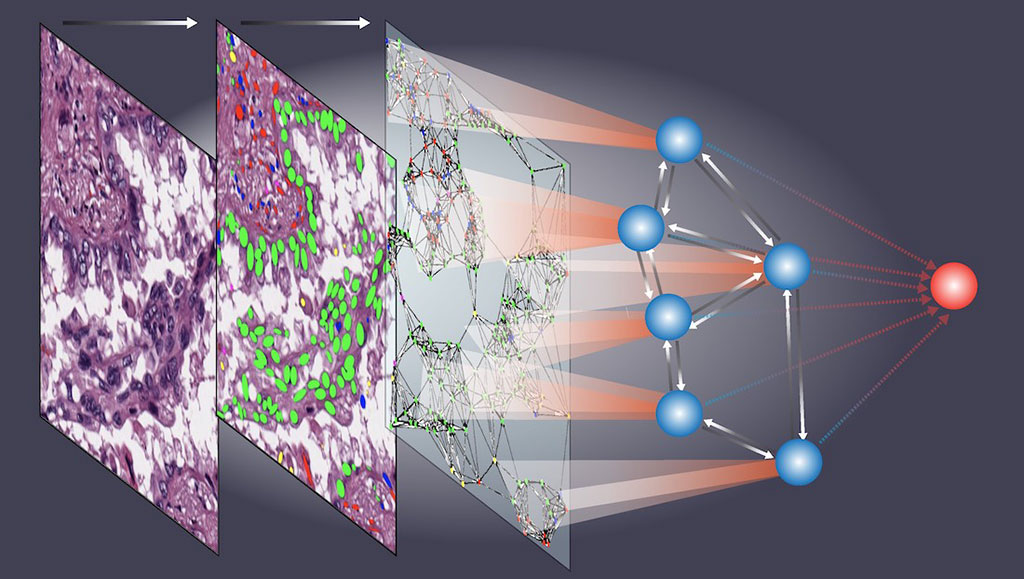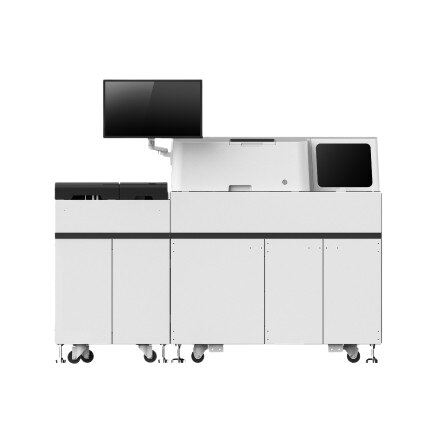AI Accurately Predicts Cancer Outcomes from Tissue Samples
Posted on 27 Dec 2023
Patient tissue samples are commonly examined on slides by pathologists, a process integral to diagnosis. This traditional method, while effective, is notably time-intensive and subject to variability in interpretations among different pathologists. Moreover, some subtle details in pathology images might escape human observation but could hold critical insights into a patient's health status. Over recent years, several artificial intelligence (AI) models have been developed to undertake certain tasks typically performed by pathologists, such as classifying cell types or gauging cellular interactions based on proximity. Nevertheless, these models have not fully captured the more intricate aspects of tissue image analysis that pathologists conduct, including recognizing complex cell spatial arrangements and filtering out irrelevant image 'noise' that could distort interpretations. Addressing this gap, researchers have now introduced an innovative AI model that is capable of examining the spatial organization of cells within tissue samples, offering precise predictions about cancer patient outcomes and offering new prospects for AI-assisted cancer prognosis and tailored treatment plans.
Dubbed Ceograph, this AI tool, created by researchers at UT Southwestern Medical Center (Dallas, TX, USA), mimics the approach taken by pathologists for examining tissue slides. It begins by identifying cells and their respective positions within the image. It then classifies cell types and delineates their shapes and spatial distributions, creating a comprehensive map where the arrangement, dispersion, and interactions among cells are detailed for analysis. The team validated Ceograph in three clinical scenarios using pathology slides. In one instance, Ceograph distinguished between two lung cancer types: adenocarcinoma and squamous cell carcinoma. In another, it gauged the progression risk of potentially cancerous oral conditions to malignancy. Finally, it identified lung cancer patients most likely to benefit from epidermal growth factor receptor inhibitors.

In each scenario, Ceograph's performance in predicting patient outcomes surpassed traditional methods. Notably, the cell spatial organization insights provided by Ceograph are not only interpretable but also shed light on the biological implications of varying individual cell-cell spatial interactions. These developments highlight the increasingly vital role AI can play in healthcare, particularly in enhancing the precision and efficiency of pathology analyses. This technology promises to refine preventive strategies for individuals at high risk and tailor treatment choices to meet each patient's unique needs.
“Cell spatial organization is like a complex jigsaw puzzle where each cell serves as a unique piece, fitting together meticulously to form a cohesive tissue or organ structure,” said study leader Guanghua Xiao, Ph.D. “This research showcases the remarkable ability of AI to grasp these intricate spatial relationships among cells within tissues, extracting subtle information previously beyond human comprehension while predicting patient outcomes.”
Related Links:
UT Southwestern Medical Center













